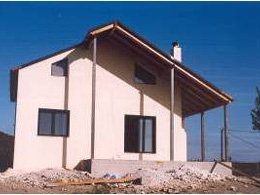ARCHITECTURAL REVIEW

12 June, 2010
Architecture: contemplating its future
Architecture... What does its future hold?
Is it still going to be relevant or de facto deemed obsolete, replaced by other professions or disciplines? Are we watching the hour glass with architecture's time almost run out?
In the 19th century the study of architecture was pursued solely as a course of liberal arts or humanities' studies. We certainly do not live in the romantic era anymore, for our times are undoubtedly very realistic and technocratic.
It is known that man preoccupies himself with the arts after his basic needs are met. Try telling a hungry man in Africa about SANAA winning the 2010 Pritzker Prize. Or, not going that far, try engaging him in a discussion about architectural styles.
The computer has unveiled previously unimagined possibilities to the engineer, the designer or the builder... Design has been a household word in the developed world, as attested by countless glossy magazines and television shows devoted to the subject.
It is challenging to even imagine any other discipline that can take over the baton. Indeed, the training of an architect is very idiosyncratic, with the cerebral and philosophical conceptual approach being his forte. Although architecture has been around for centuries, the role of the architect has diversified, as a result of technology and ecology, amongst other factors, that have emerged during the last two centuries.
The key words here being ecology and technology. Keeping in mind that these two determinants in themselves are very inadequate, to define the whole of architecture, without considering the humanitarian influences on architectural form and space. The social basis of architecture today is frowned upon, neglected, not a fad, or, at best, not in the limelight. Gone are the sixties where such issues were popular, with the architect optimistically marching under the banner of the urban doctor (True, today we hold a more realistic and holistic view of the urban ills).
"Concluding, there is the need to redefine and 'protect' architecture, a momentous task to be assumed preferably by the architects themselves. This is the new challenge architecture is called to face. Needed is the Ana synthesis of architecture before it is too late. We support that the founding of any '-ism' or any trend in architecture in the 21st century, when wars will be waged for water, will arise naturally out of a painstakingly careful approach, combining a technocratic environmental vision in tune with the psycho-social needs of man ...". [1]
Michael A. Vidalis, Architect, MArch.
Note [1] Michael A. Vidalis, "anti·Architecture: Architectural Monologues" (Athens: IWN Publishers, 2005).
Related articles:
- “anti∙Architecture: Architectural Monologues” ( 09 June, 2008 )
- A multi-deterministic approach to architecture ( 20 May, 2010 )
- Social Spaces by a Social Architects? ( 17 January, 2015 )










